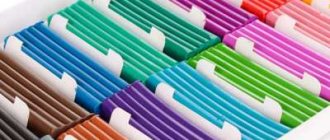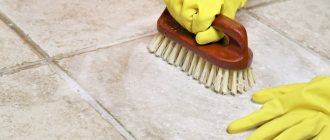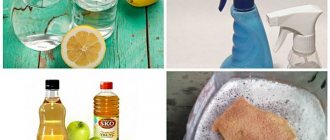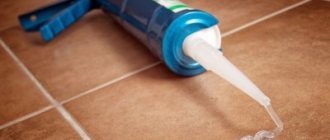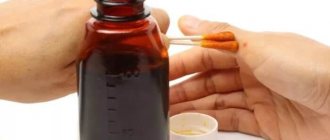One of the pressing questions after repairs is how to remove silicone sealant. There is an opinion among inexperienced citizens that the influx can only be cut off, but this is not true. Silicone, like other polymeric materials, is dissolvable, so it is relatively easy to soften it from a solid state and remove it from the surface to which it has stuck.
How to influence silicone glue
There is no universal remedy, so the sealant is dissolved, scraped off, cut off, scrubbed, washed off. There are mechanical and chemical methods.
Mechanical method
This is cutting with a sharp knife, scraping with a flat screwdriver, spatula or scraper, rubbing with sandpaper, pumice, metal sponge or salt.
It is important to be careful not to damage the surface underneath the sealant. First, use a knife to remove the main deposits of sealant from the surface to be cleaned, then use abrasive substances to clean off the silicone glue
Apply moistened salt to a sponge and rub off the frozen mass in a circular motion.
First, remove the main deposits of sealant from the surface to be cleaned with a knife, then clean off the silicone glue with abrasive substances. The moistened salt is applied to a sponge and the frozen mass is scrubbed in a circular motion.
Any stains remaining after exposure are wiped off with dishwashing gel or glass cleaner.
Chemical method
This is the use of various types of solvents. They do not completely destroy the sealant, they only soften it. But after this it is much easier to clean the surfaces.
How to clean silicone with their help?
The solvent is selected based on the characteristics, composition and properties of the sealant.
Household ones are usually one-component. Two-component - with improved characteristics and long-term action - intended for industrial use.
One-component ones are acidic, neutral, alkaline. Here's how to act on each of them.
Acidic
They contain acetic acid, which gives the sealant a specific odor. They fight such sealant with concentrated (70 percent or more) vinegar.
Progress of work: a portion of vinegar essence is poured onto the hardened sealant and stirred little by little.
Neutral
They are made on the basis of alcohol or ketoximes. There are amine, oxide and alcoholic ones.
Such sealants are dissolved with technical or medical alcohol, white spirit, acetone, and gasoline. There are also special solvents: Antisil, Penta-840, etc.
Alkaline
These are silicone sealants with the addition of amines. They are used for external and internal work. They have antiseptic and anti-corrosion properties.
Before starting work, you should carefully read the composition of the sealant. It may contain antiseptics against mold, extenders for greater hardness, inclusions of sand, chalk, and coloring pigments. The choice of solvents also depends on this.
Key Features
Today there are many types of sealants on sale: acrylic, silicone, polyurethane. Nevertheless, the bulk of existing sealing mixtures differ in chemical composition, which can be either two-component or one-component. It is the latter that is used in everyday life, being known as silicone sealant.
This material is used during repair work to seal cracks, gaps, and joints.
In turn, this mixture is divided into two types:
- Acidic. A common sealant that is significantly cheaper due to the presence of acetic acid, which promotes accelerated bonding and polymerization.
- Neutral. This option is more preferable when working indoors, however, it is characterized by increased requirements for the surfaces being treated and a long polymerization period (up to a day), which may not always be convenient.
The sealant can be used in the kitchen, bathroom, toilet, balcony and other rooms.
Professional products
These are special silicone wipes or washes. They are used when it is necessary to soften the sealant and remove it from the surface. How does it work?
- The product softens the silicone to a fluid state.
- Take one part of rubbing compound to 6 parts of sealant.
- The mixture is stirred until smooth.
- Rubbing does not affect the quality characteristics of the sealant.
We list popular ready-made products for diluting and easily removing silicone sealant from the surface.
Penta-840
Options for removing silicone sealant are available for different surfaces. The product is not afraid of temperature changes. Take a clean cloth and apply it to the contaminated surface. Cover with plastic wrap and leave for the time specified in the instructions. The product dissolves the sealant, after which the remnants of the latter are easily removed.
Silicone Remover
The product quickly liquefies hardened silicone of various types. Apply it to clean, dry glue, leave for 15 minutes, and collect the softened mass with a rag.
Lugato Silicon Entferner
Works great on metal, wood, glass, stone and tile surfaces. Available in paste form.
Permaloid
Designed for use primarily on plastics that require more delicate handling. Therefore, it only affects silicone and leaves no marks on plastic.
Dow Corning OS-2
Removes silicone and degreases the surface. The main purpose is to clean the surface before painting, gluing, or sealing. Allowed to be used on surfaces where food will be located.
In all cases, the proportions and exposure time should be strictly observed.
Useful tips
If you need to clean the sealant urgently, you can do this by heating. Thus, it is permissible to operate on any surface where it is convenient. First, apply a little vinegar to the glue, then attach a sheet of paper. Then pass over the sheet with a heated iron.
Freezing is often used to remove glue from fabric. The item is placed in the freezer; first it must be put in a bag. After 3 hours, the adhesive composition is carefully removed with a sharp spatula. If there is no solvent at hand, small stains of sealant can be eliminated with hydrogen peroxide. To avoid difficulties with cleaning the material, it is better to follow safety precautions when working with it. You should work with gloves and work clothes, and avoid getting glue on the surface. For reliability, the latter are covered with masking tape, which will not allow the sealant to “go beyond the limits”.
How to remove sealant from different surfaces
Silicone sealant has earned the reputation of being the most “harmful” among home craftsmen, since it is capable of penetrating even the smallest cracks, from which, after hardening, it is almost impossible to remove. Therefore, if sealant gets on non-working surfaces, you should immediately begin to neutralize it, because with every minute the cost and time to scrape off the affected area increases exponentially. However, some materials, in principle, do not allow you to get rid of silicone.
Now on the market you can find various kinds of products that specifically help soften and wash the sealant.From glass
Since the physical structure of glass prevents deep adhesion, to remove the sealant from its surface, it is enough to cut off the base layer with a knife with a thin blade, after which the residual film is removed using white spirit or a regular office eraser. Particularly stubborn layers can be removed using strong heat or in a more radical way, for example, with a drill with a felt attachment.
Before removing any remaining silicone sealant by mechanical treatment, care must be taken to avoid scratching the glass.
From plastic
Silicone is much easier to remove from this surface, since plastic is also not very susceptible to adhesion (unless special treatment has been carried out). However, to remove it, you will still have to use a solvent, which is applied to the stained area and left for an hour. After this, the bulk of the silicone is removed with a spatula. The residual film is easily washed off with any degreaser.
When trying to scrub off the silicone, it is important not to overdo it so as not to scratch the surface.
From the tile
On the one hand, the tiled surface allows the use of any chemical that can soften sealants, but on the other hand, it still cannot be done without mechanical treatment. This means that there is a risk of damaging the glaze coating of the tile. Therefore, in order not to spoil the enamel, you should (if possible) carry out experimental removal in the least noticeable place - usually this procedure involves the use of a solvent, followed by treatment with an abrasive or spatula.
All work to remove contamination must be carried out carefully so as not to damage the surface being treated.
From clothes
The most difficult case, since there is nothing worse than fabric soaked in the sealing mixture. A more or less acceptable result can only be obtained by removing fresh silicone, since it is almost impossible to clean sealant that has already dried. However, you can try the following:
- Gasoline can clean film from recently spilled sealant quite well.
- You should try to freeze the hardened silicone. For example, in the freezer. Then try to pick it off.
- Sometimes heat treatment helps. You need to iron the contaminated area through a paper towel - part of the sealant will be absorbed into the paper, and the rest can be washed off with a solvent.
Removing silicone sealant from clothing is not that difficult.
From hand
Despite the fact that it is recommended to carry out all work with protective gloves, silicone still periodically comes into contact with the skin. If this happens, you need to wipe the affected area well with a clean cloth soaked in vinegar and water (1:1) and then remove the remaining sealant with a solvent.
At the end, you should wash your hands well with soap and lubricate with moisturizer.
Sealant
Silicone materials have excellent elastic properties. The presence of solvents included in the sealant allows excellent gluing of various surfaces:
- Sealants with antibacterial properties do an excellent job of sealing seams in bathrooms. In addition, they are widely used for repairing leaking surfaces that have to be in constant contact with water, for example, swimming pools, aquariums.
- Silicone-based sealants are also used in the construction and automotive fields.
Important! Once on the surface of the coating, silicone firmly eats into the pores of the material and is therefore very difficult to remove. It is especially difficult to deal with areas where the material has been present for a very long period.
Despite the labor-intensive procedure for eliminating silicone sealant residues, there are still several tricks that will help you cope with the task and achieve the sparkling beauty of the contaminated surface.
How to wash your hands
According to construction statistics, in 50 percent of cases, special glue ends up in the hands of the person applying it. Excessive haste, neglect of skin protection - the reasons are different, but the outcome is the same: mixture on the palms. How can I remove silicone sealant from my hands so that the epidermis remains in place? Obviously, caustic household chemicals are not appropriate here. Popular advice on how to wipe silicone sealant from your palms recommend the following:
- take 9 percent vinegar and mix with water in a 1:1 ratio. Soak a cotton swab or cotton pad in the resulting solution and wipe the skin. Do not rub too hard to avoid damaging the dermis layer;
- A high-quality nail polish remover will help you wash off silicone sealant. You can apply it to a cotton swab and apply it to the place where the composition got in. 2-3 minutes are enough to remove the mixture;
- Clean the silicone sealant from your hands like this: pour warm water into a deep bowl or basin, add 3 tablespoons of sea or table salt, immerse your palms in the solution for 10-15 minutes. After the procedure, the special glue will soften and can be easily removed with running water and soap;
A bath of water and 3 tablespoons of salt will help remove silicone sealant from your hands. Soak your palms in the liquid for 15 minutes
- How to wipe off silicone sealant if it just got on the dermis? A polyethylene bag! Take the bag and apply it to your skin. The mixture will stick to the polyethylene and come off your palms;
- Alcohol toners for oily skin can also fight back against special glue. Apply the solution to cotton wool and apply for 5-10 minutes;
- Gasoline or acetone will help remove the glue. Every car enthusiast has these tools. A couple of drops is enough. Apply gasoline or acetone to the skin, the mixture will come off;
- Before you start working, lubricate your palms with rich cream or any oil. It will not be very convenient to work, but the glue will not stick to the dermis.
So simply and quickly you can dissolve silicate without the use of special chemicals.
After removing the substance from the skin, treat the epidermis with a restorative cream, for example, Bepantent or Triderm, to avoid irritation.
If the rash, itching and redness after removing the silicone sealant from the skin does not go away within 24 hours and after taking antihistamines. you need to see a doctor urgently
Safety precautions at work
Most operations to remove old sealing mixture involve the use of both a cutting tool and the use of aggressive chemical liquids. Having decided how to remove the remaining silicone sealant, you should take the necessary precautions:
- All operations should be carried out wearing rubber gloves, as well as comfortable clothing that does not restrict movement. Operating conditions should not create additional interference.
- When using tools with sharp edges, you should be extremely careful - do not work by weight or with one hand.
- The use of chemical reagents is prohibited in small, enclosed and poorly ventilated areas.
- When replacing sealant, you need to be extremely careful and not allow silicone to get into open areas of the body, and especially into your eyes! Carry out work only wearing a protective mask.
Thus, for any type of economic or construction work (especially at home), all of the above should be taken into account in order, if necessary, to be able to quickly localize damaged areas, bringing their condition to its original form. Moreover, understanding how to remove silicone sealant will allow you to better organize your work process, and having knowledge and experience will make it possible to avoid significant problems later.
Features of removing silicone sealant from different types of surfaces
To remove sealant from various surfaces, it is necessary to take into account some features. There are different methods that most effectively help remove contaminants.
How to remove sealant from tiles
Small specks of silicone sealant on tiles or plumbing appear after a while, look unsightly, and turn yellow over time, so it is important to remove them in a timely manner. This is best done using a regular stationery knife, walking along the tile joints and scraping with a razor blade
You can remove remaining silicone stains with a regular wire net, a tampon soaked in a solution of table salt and washing powder. It is recommended to do this in the order listed.
It is advisable to remove the mixture exclusively by mechanical force, because the chemicals not only destroy the integrity of the sealant, but also break the tightness of the tile seams.
How to remove silicone sealant from a bathtub
To remove any remaining product, you can catch it and try to remove it with adhesive tape. In this case, it is necessary to refrain from using many mechanical methods and strong chemicals, which can lead to scratches and damage to the bathtub coating. In rare cases, it is permissible to use a sharp knife or razor blade. To do this, you need to remove the layer of sealant, being careful not to touch the coating of the plumbing.
How to remove silicone sealant from glass
For glass surfaces, it is best to use a stationery knife or razor blade.
This must be done with care to avoid scratching the glass. After cleaning the caulk, excess can be removed using window cleaner, apple cider vinegar, or rubbing alcohol.
You cannot use gasoline and kerosene, because they will leave strong stains on the glass, which will be very difficult to remove.
How to remove silicone sealant from a countertop
The method of cleaning silicone sealant from the surface of the table must be chosen taking into account the material from which it is made. You can remove it from porcelain stoneware using all existing mechanical, chemical and folk methods. Before using any preferred product, it is advisable to test it on a small area of the table.
How to remove silicone sealant from plastic
It is much easier to clean ingrained silicone sealant from a plastic surface than from other materials, because silicone does not stick to plastic as much. A weak solvent is ideal for these purposes. It is necessary to apply it to the problem area, wait a few hours, and wipe off the silicone sealant that has come off with a soft sponge.
How to remove silicone sealant from hands
The mixture can be removed from the skin of the hands with ordinary table salt and pumice. It is necessary to fill a large bowl with warm water, add 4 tbsp. l. table salt, dip your hand and rub the sticky mass vigorously with a piece of pumice. In this case, you will have to spend a lot of free time on cleaning. Most likely you will need to do this 3 more times.
Important! Under no circumstances should you try to wipe the sealant off the skin with chemicals! In this case, you can get burns, allergies and contact dermatitis.
How to remove sealant from clothes
It is best to remove silicone sealant from cotton fabrics using solvents (acetone, nail polish remover). It is necessary to moisten a piece of cloth in a solvent, apply it to the problem area, rub it and wait several hours. It may be necessary to carry out several procedures. You can replace the solvent with medical alcohol or vodka.
Silicone can be removed from clothing using mechanical force. It is necessary to straighten the item, stretch it strongly, and then scrape it off the fabric with a toothbrush. This way you can remove sealant from any fabric.
Removing sealant residue from countertops
To eliminate traces of silicone from a contaminated countertop surface, you can use various solvents. For a successful removal process, it is necessary to ask in advance how compatible the solvents are with the material from which the item is made.
Silicone-based sealant is best removed using petroleum products, such as refined gasoline. A small amount of this product is applied to the contaminated area, after which it is eliminated by wiping with a soft cloth or rags.
Important! This option for removing silicone is suitable if the sealant has not had time to harden. If some time has passed and the silicone has had time to dry, the top layer must be removed using an ordinary knife or blade. After which you need to use a detergent that will help treat any remaining silicone on the surface.
ROOM-840â
RESULTS › SMALL GOVERNMENT µ SOS, s ¸ÐºÐ¾Ð½ Ñ Ð¿Ð»Ð¸Ñки или ÑÑекла.
ROLL-840 ROLL-840 µÑмеÑиков
› RESULTS ´ÐºÐ¾ÑÑÑ, и пÑÐ ¸ RESEARCH RESULTS ¿Ð¾Ð²ÐµÑÑноÑÑей.
SOLUTION Silicon Remove r.
RESPONSIBILITY › ›
registry, regurgitation RESULTS ¾ ¾Ð²ÐµÑÑноÑÑей.
2nd October 2018
RESULTS RESPONSIBILITY:
RESULTS
- RESULTS
- What's wrong?
- RESULTS
- RESPONSIBILITY
- RESEARCH
- ROOM
- ROOM
- жавÑина Ñ Ð¾Ð´ÐµÐ¶Ð´Ñ
- RESULTS
How to wash it from clothes?
Very often, clothes are subject to the adhesion of silicone glue. Unlike other substances, it cannot be washed off with any stain remover. Immediately after contact, immerse the fabric in hot water. The high temperature will soften the glue, making it easier to remove from the fibers. If it is not possible to immediately throw things into the washing machine, and the sealant has already hardened, then you will have to resort to already known solvents. You need to soak your clothes in them for half an hour, and then calmly wash the stain.
The solvent can ruin colored fabric, so it is advisable to resort to mechanical cleaning. To do this, you will have to lay out your favorite T-shirt on a flat surface, and carefully, layer by layer, cut off the remaining mixture from the fabric to the very base. The solution deeply embedded in the fibers is scraped out with a brush or pumice. It would be a good idea to treat the residues with vinegar concentrate or other universal solvent, as well as gasoline or alcohol. Then, of course, it is better to wash the remaining softener in hot water.
2 more available methods
If such a solution fails to eliminate traces of silicone, then you can try heating the surface to a high temperature, after which the remaining sealant will simply fall off. After this procedure, it is necessary to wipe the area with a regular cleaning agent.
Important! It is necessary to carefully carry out the heating process, since not every surface can withstand high temperatures without changing its properties.
The more time has passed since traces of silicone appeared, the more difficult it will be to eliminate them. For difficult cases, acetone can be used. When treating a surface with such a product, you must adhere to safety rules and use personal protective equipment, such as a gauze bandage or a respirator, goggles and gloves.
RESULTS
RESULTS RESULTS °ÐºÐ°Ð»ÐµÐ½Ð½Ð¾Ð¹ плиÑки, напÑимеÑ, в ванной. RESULTS, RESULTS µÐ½Ñ поÑожа на ÑÑекло и Ð¾Ð±Ð»Ð°Ð´Ð°ÐµÑ I'm sorry.
RESULTS °
RESULTS ss ROOM ²Ð¸Ð´Ðµ Ð³ÐµÐ»Ñ Ð¸Ð»Ð¸ жидкоÑÑи .
Let's go! RESULTS и ÑÑедней ÑеÑке, ÑÑÐ¾Ð±Ñ Ð¸Ñ Ð±Ñло пÑоÑе Ñа ASSURANCE.
RESPONSIBILITY, RESPONSIBILITY, RESPONSIBILITY, RESPONSIBILITY ²Ð¾ÑиÑÑ Ð² воде, пÑедваÑиÑелÑно ее на RESULTS ROOM ½Ð°Ð¼ÑливР°СССС. RESULTS ASSURANCE.
RESULTS, RESPONSIBILITY емонÑа.
Suitable means
Silicone does not only need to be removed during application.
It is removed if:
- when the old sealant has already become unusable and has lost its complete sealing;
- during work it turned out that due to violation of the rules, complete sealing did not occur;
- mold and mildew have appeared;
- if the surface was accidentally smeared.
The sealant penetrates very deeply into the material, which makes it very difficult to remove it from the surface, especially when it has already been in contact with it for a long period.
There are different ways to remove silicone. For some surfaces it is better to choose a mechanical method. This method should not be used to clean glass surfaces, tiles, acrylic or enamel bathtubs, otherwise they can easily be damaged. The mechanical method is suitable for cleaning surfaces that are not visible, since there is a possibility of damaging the surface during cleaning and scratches may remain.
In order to remove the old layer of sealant, you should take a knife and use it to pick up the seam. After the top layer of silicone is cut off, use the sharp end of a knife to remove any remaining silicone and clean the surface to be treated. You can use sandpaper or pumice for cleaning.
The surface should be cleaned carefully so as not to scratch or damage it.
Silicone is removed using special means. You can purchase sealant in the form of a paste, cream, aerosol or solution. Let's look at some of them.
Lugato Silicon Entferner is a special paste that can be used to easily remove dirt from many types of surfaces. The paste cleans well sealants on glass, plastic, tiles, and removes dirt from acrylic surfaces and enamel. Suitable for metal surfaces, concrete, stone, plaster, removes glue from wooden surfaces well. To remove the sealant, use a sharp knife to remove the silicone layer; its thickness should not be more than 2 mm. Apply the paste to the surface for 1.5 hours. Remove silicone residue with a wooden spatula. The surface is washed with detergents.
Sili-kill removes dirt from brick surfaces and concrete, ceramics, metal, glass. When using, cut off the top layer of sealant, and apply this product to the surface for half an hour. Afterwards you should wash it with soapy water.
Penta-840 is a remover for cleaning sealant from surfaces made of metal, concrete, glass, and stone. This product can be used to treat cast iron bathtubs and tiles. This product is tested on a small area. To do this, apply it to a part of the surface for a few minutes and inspect whether everything is in order. After checking, remover should be applied to the sealant. After half an hour, the silicone swells and is removed with a sponge.
Dow Corning OS-2 is used to clean silicone from glass, metal, plastic, and ceramics. The top layer of sealant is removed. This product is applied for 10 minutes. Using a damp cloth or sponge, remove the residue.
This method is used to delicately remove silicone or greasy stains from it. You should take a piece of gauze or a tampon, moisten it slightly and put salt inside. You should rub the surface with such a salt bag, but you should not rub it too hard, the movements should be circular. When the silicone is removed, a greasy residue remains on the surface, which can be removed with dishwashing detergent.
You can clean silicone from the product and any surface using chemical means. Such products help get rid of silicone quickly and easily. You can use white spirit for such purposes. It helps remove adhesive from tiles, ceramics, cast iron, and glass.
White spirit should not be used on painted surfaces. When using this product, apply it to cotton wool or gauze and clean the contaminated area. After a few minutes, when the silicone becomes soft, it is removed with the tip of a knife or blade.
You can remove dirt with acetone. Before use, apply it to a small area. If the surface remains unchanged, you can apply acetone to the entire seam. Acetone is more aggressive than white spirit and has a strong odor. The liquid is applied to the seam and wait 15-20 minutes until it softens and loses its shape. Residues should be removed with a cloth.
Do not use plastic cleaner, otherwise the acetone may dissolve the plastic surface. It is used for products made of tiles, glass, and cast iron.
After treatment, an oil stain remains on the surface, which can also be removed with acetone or white spirit, using table vinegar. It has a sharp, specific odor, so you should work with it wearing a respiratory mask and ventilate the room well.
You can also use other solvents such as kerosene and gasoline. Sometimes these products can cope with stains no worse than expensive store-bought products.
How to clean sealant using solvent
The popularity of silicone sealant is primarily due to its high adhesive properties and short hardening time. In most cases, if it is necessary to completely remove the dried layer, special solvents are used, so nothing other than a knife or scraper will be able to remove it from the surface.
During work, situations arise when silicone can get on the surface being treated, clothing or hands.
Types of Chemical Solvents
Before applying chemicals, it is advisable to know the type of sealant that needs to be scrubbed off. For sealants with an acetic hardener, this should be one type of flushing liquid, and for neutral ones, another. Typically, a suitable product can be purchased at any hardware store or from a specialized distributor of the manufacturer specifically for the specified brand.
Silicone hardens in air quite quickly. If sealant gets on the surface, it is better to remove it immediately.
Before removing the remaining silicone sealant, it must be thoroughly treated with a solvent. In this case, you should not wet the entire seam or patch at once, since, for example, white spirit evaporates quickly and this procedure will have to be carried out again. It is better not to rush and remove the sealant in small parts and only after it has softened under the influence of chemical reagents.
Silicone sealant can be washed using special removal products.
Acidic
This type of sealant can be treated well with a concentrated 70% vinegar solution. You can also try industrial alcohol. In addition, there are universal means that allow you to both clean a sealant of a known composition and dissolve arbitrary types of mixtures, the hardener of which is not predetermined. For example, "Penta-840" or "BODY Antisil 770".
When cleaning, you should always remember that this should be done carefully, trying not to damage the surface being treated.
Neutral
These sealants can be easily cleaned using gasoline, white spirit or acetone. You should be careful with the latter, as it is not suitable for all surfaces. You can also use more effective products that contain methylsiloxane, for example, Dowsil OS-2.
Before use, apply it to a small area. If the surface remains unchanged, you can apply acetone to the entire seam.
Note! The use of solvents only helps to soften the hardener. The initial removal of the sealant still needs to be done mechanically, using a knife or spatula.
How to clean?
When treating joints and seams in the bathroom with sealant, you should understand that after some time the old layer of silicone may become unusable. Mold appears at the joints and seams, and it is no longer possible to remove it, so you should remove the old layer of sealant and fill the seams with new grout. To remove the old layer from the tile, you should take a knife and cut off the top layer of silicone. You can use a screwdriver to clean the gaps between the tiles. After the seams have been cleaned mechanically, it is recommended to clean the cracks with a vacuum cleaner. A solvent is applied to the treated surface; after it softens, the silicone will become easier to clean with a wooden or plastic spatula. It takes two to twelve hours to soften the silicone. More precisely, it should be indicated on the packaging.
You can remove frozen silicone with gasoline or kerosene. The product is applied to the surface and rubbed a little, then you should wait until the adhesive composition becomes soft. To remove silicone, you can try Penta 840. Before using it, you should first treat a small part of the tile with it. If you do not test the preparation in a small area, cracks may appear on the tiles, since tiles are not always resistant to the preparation
When it comes to removing caulk from the side of your bathtub, it is important to consider the material it is made from. Acrylic bathtubs require special treatment
You only need to remove dirt from an acrylic bath using special factory-made solvents. To clean trays and shower stalls, it is not recommended to use sandpaper, steel wool, or brushes.
Also, do not use organic solvents.
All work to remove contamination must be carried out carefully so as not to damage the surface being treated. If the bathtub is steel or cast iron, you can clean it using abrasive materials and chemicals
When trying to wipe off silicone from joints in the bathroom, it is important not to overdo it so as not to scratch the surface.
If you need to remove silicone sealant from glass surfaces, choose white spirit or gasoline. This can be done very quickly and easily at home. The cloth should be soaked in a solvent and applied to the glass; after a few minutes, the remaining silicone can be easily removed. When working with sealant, it is not uncommon for silicone to get on clothing or remain on your hands. While the glue has not yet hardened, stretch the fabric and, picking it up with a spatula, remove the silicone. If the glue has managed to soak into the fabric, you should take vinegar, technical and medical alcohol to remove it. The selected liquid is poured onto the stain, the area with the stain is scrubbed with a toothbrush, and the glue will begin to roll out, forming lumps. After treatment, you need to wash your clothes by hand or in a washing machine.
If silicone gets on your skin, you can try to wash it off using regular salt. Pour a little salt into a jar of warm water, hold your hand in this solution for a while and then try to wipe off the dirt with a pumice stone. It is not always possible to get rid of the glue immediately, so this procedure is carried out several times during the day. You can try lathering your hands well with laundry soap, then rubbing them with a pumice stone. This sanitary product can be used to remove sealant from very small areas on your hands. You can get rid of sealant using vegetable oil. It is heated and applied to the skin, then lathered with laundry soap and washed well. If all these methods do not help, you can use chemicals.
Description of composition
Silicone is a universal substance that has the ability to seal various holes, is soft and plastic. Based on it, sealants are made - adhesive compositions (transparent, white), which after drying acquire a dense, homogeneous structure. A good sealant is resistant to solvents and mechanical damage, otherwise it would not be able to perform its functions. At home it is used for:
- aquariums;
- interior doors;
- windows;
- bathrooms;
- ovens;
- refrigerators;
- bathrooms.
Of all the sealants, silicone ones are the most difficult to remove if they get on an unwanted surface. The process will take time and is labor intensive.
Review of popular removal methods from various surfaces
Once on the surface, the sealant hardens quickly and is difficult to remove using conventional means.
Mechanical
pry the material with a knife or other sharp object and pull carefully; Scrape off the silicone using a metal scraper or spatula by scraping. The main part of the contamination is removed with a sharp object, then the surface is cleaned with a layer of sandpaper; The mechanical method is well suited for floor coverings (laminate).
The above methods are suitable for dark surfaces that have increased resistance, otherwise you can remove the stain along with paint and acrylic
The above methods are suitable for dark surfaces that have increased resistance; otherwise, you can remove the stain along with the paint and acrylic.
Chemical
When using chemicals on a thick layer of sealant, pre-treat the seams with a rag with a remover.
The chemical substance is selected depending on its composition. There are one- and two-component silicones. Acidic ones are removed with concentrated vinegar or a solvent, alcoholic ones are removed with ethyl alcohol, neutral ones are dissolved with white spirit.
There is another classification of silicones.
- plumbing – used for sealing sanitary facilities: acrylic bathtub, shower stall;
- adhesive-sealant – used in the manufacture of glass and glass-ceramic products: aquariums, stained glass windows;
- silicones with antifungal additives - used in aquariums and swimming pools.
| Chemical name | Peculiarities |
| White Spirit | Consists of aliphatic and aromatic hydrocarbons. Use on unpainted surfaces, otherwise the sealant will be removed along with the paint. |
| Penta-840 | Universal solvent, used under any storage conditions and air temperature. Apply the substance to the required surface, wait until completely softened, and rinse with plenty of water. |
| Antisil | Silicone degreaser. |
| Dow Corning OS-2 | A product for removing substances from PVC and acrylic surfaces. |
| Silicon-Entferner | Removes from enamel, metal, plastic surfaces. |
| Lugato Silber Shutz Silicon | In addition to removal, it prevents the appearance of fungus and mold. |
Household methods
fresh stains are removed with a cloth soaked in soapy water. You can clean the brush by soaking it in warm detergent; the method of removal depends on its composition. Neutral seals are made on the basis of alcohol, alkaline – on the basis of alkali, acid – using acetic acid. To remove, soak the sealant in the material on which it is based; consider the type of surface. It is forbidden to treat wooden kitchen surfaces (countertops) with acetone or white spirit, metal ones with vinegar (to prevent corrosion); to get rid of silicone on ceramics, first treat with a solvent, and after half an hour rub the stain; The easiest way is to wipe off old stains from plastic. It is enough to soak the surface, after half an hour treat it with a solvent, then with a degreasing solution
Use acetone with caution on plastic, as there is a risk of it softening; removed from metal mechanically (use a knife or scissors); It is easy to wipe off traces of silicone sealant from glass if you preheat it; If the sealant needs to be removed from the tiles in the bathroom, pick it up with a sharp object and evenly, without sudden movements, remove the substance along the entire perimeter of the tile. If you are afraid of scratching the tiles with a sharp object, use a wooden scraper. Before applying a new sealant, first degrease the surface; wrap the salt in gauze and treat any type of silicone; Heat the required element with a hairdryer; the high temperature will cause the silicone to fall off on its own.
Before applying a new sealant, first degrease the surface; wrap the salt in gauze and treat any type of silicone; Heat the required element with a hairdryer; the high temperature will cause the silicone to fall off on its own.
How to remove silicone sealant using traditional methods
Traditional methods are the most gentle; they are best suited for removing silicone sealant from clothes.
Vinegar essence
The active substance contained in vinegar effectively destroys the structure of the adhesive mass.
To do this, you need to fill a basin with water and add half a package of vinegar essence. Mix the solution, dip the soiled clothes in the basin for half an hour. Use a toothbrush to scrub off excess sealant and wash it in washing powder. Wash in a washing machine, rinse thoroughly.
Polyurethane foam
You need to apply a little foam to the stain and wait until it dries a little.
Remove carefully because marks may remain on the problem area. They can be removed with gasoline, then wash the item in a washing machine and rinse well
Alcohol tincture or vodka
You can wipe off glass sealant with regular vodka or medical alcohol. This method is also suitable for removing stains from clothes. Vodka works well for cotton fabrics, but other alcohols can ruin the fabric. To remove the mass, you need to dip a piece of cloth in regular vodka and apply it to the problem area. Wait half an hour and clean with a sponge.
Important! Sealant fumes are toxic. Before cleaning, it is necessary to open all the windows in the room; it is recommended to wear a respirator.
Freezing things
You can remove sealant from clothes by placing them in the freezer. Silicone sealant does not tolerate cold well. It is necessary to place the item in a plastic bag and place it in the freezer overnight. In the morning, you need to clean the frozen mass with a blade, remove excess with plain water and soak in washing powder.
Sunflower oil
It is not suitable for all types of sealants, but it usually works well with silicone. Take regular vegetable oil and heat it a little in a saucepan. You don’t need to use a lot of oil, about 50-100 grams is enough. Don't heat the oil too hot or you will burn your hands. After heating, apply the oil to your hands.
Oil alone will not remove the sealant. You need to add a little washing powder. You can completely wash your hands with it or just wipe off areas with sealant stains. The latter option is more preferable, since modern powders are very caustic. After traces of contaminants have disappeared, you should thoroughly wash your hands with running water.



